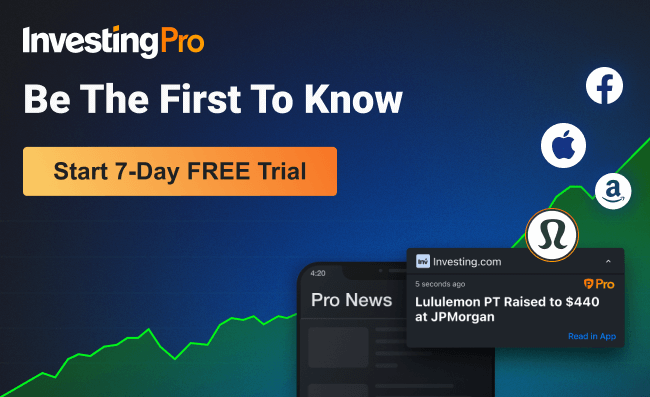- Nike stock surged higher after the Oregon-based giant beat earnings expectation next week
- Yet, despite the positive figures, the US retail industry is likely to face significant headwinds over the final quarter of the year
- Let's take a deep dive into the behemoth's fundamentals with InvestingPro to assess whether this is a good moment to buy the stock
Nike (NYSE:NKE) shares surged roughly 7% to $95.62 last week after the company reported better-than-expected earnings per share (EPS) and improving gross margins in its earnings report. Although the stock retreated in the last market session to $94.56, it remains up by 6% since the report.
The sporting-apparel giant posted a EPS of $0.94, beating InvestingPro expectations by 24%. However, the company's revenue was slightly below expectations at $12.93 billion. Nevertheless, the market generally priced Nike's last quarter report positively.
Moreover, even though the company's revenue came in below expectations, there is an increase in revenue on an annual basis compared to the results in the same period last year. As seen in the chart, the company's revenue continues to maintain its upward trend. Source: InvestingPro
Source: InvestingPro
By keeping the cost of goods sold in this region at $7 billion, the company managed to partially boost its gross profit, leading to a restoration of the gross profit margin to 44%, as observed in the same period last year.
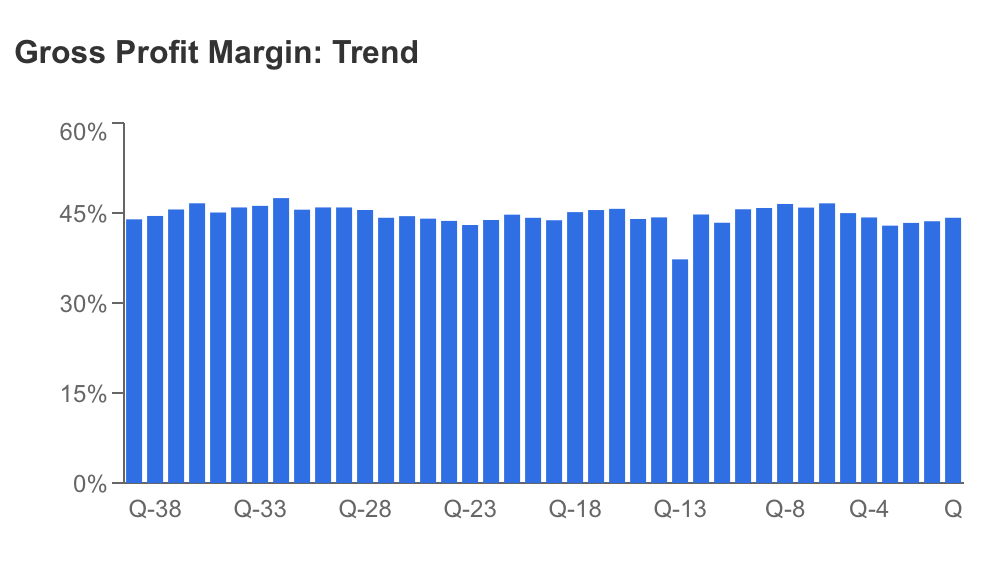
Source: InvestingPro
According to the Q3 results, the sportswear behemoth's EBITDA improved compared to the last two quarters, but remained below the EBITDA of $1.9 billion in the same period of last year with 1.8 billion dollars. Nevertheless, the jump in EBITDA, coupled with the company's positive outlook for the future, creates an expectation that the improvement in profit margin will continue.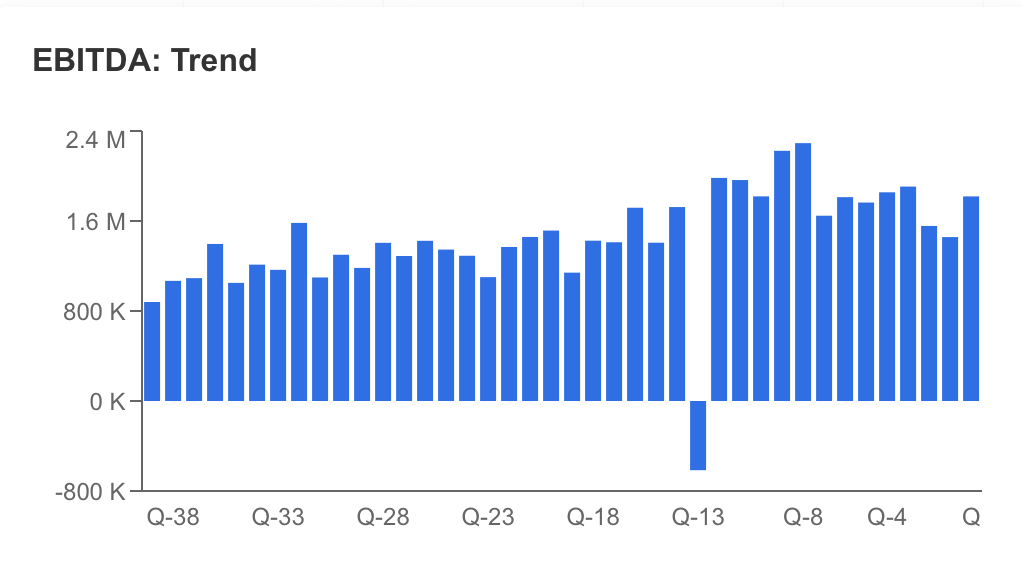
Source: InvestingPro
Macro Headwinds
Despite the positive operational figures, the macroeconomic picture doesn't look as bright for the Oregon-based company.
Nike, which operates in the retail sector, is seen as one of the companies that may be exposed to the concerns of slowdown in consumption within the framework of the tightening policy in the US economy. However, company officials' positive outlook for the future and quarterly results do not yet reflect a negative impact. Moreover, the US data reflects that economic vitality is being maintained, further postponing recession concerns. Again, the sportswear company faces two challenges, one of which is global.
According to the latest data, Nike's US sales fell by 2% and its overall sales figures fell below forecasts for the first time in two years. Executives, however, don't see this as a problem and expect sales to pick up during the holiday season as consumers remain resilient. Nike has the advantage of being a leading global brand that is among consumers' first choices.
The resumption of student loan payments in the US this month is another important factor that may curtail consumption. While many retail brands said that this situation could negatively affect sales, Nike did not dwell on this negative situation in its statements after the earnings report.
Another situation that could hinder Nike's overseas sales is the slowdown in China. China, the company's largest overseas market, has the potential to be a negative for Nike's financials in an environment of declining consumer demand and increasing competition. Nike executives, on the other hand, think they can overcome this pressure by expressing their confidence in the increase in activity in China after the pandemic.
Best-In-breed?
When we compare Nike with peers and the industry through InvestingPro, we can see that the company is ahead of the industry and peers in terms of profitability, while it lags behind peers in terms of growth items. 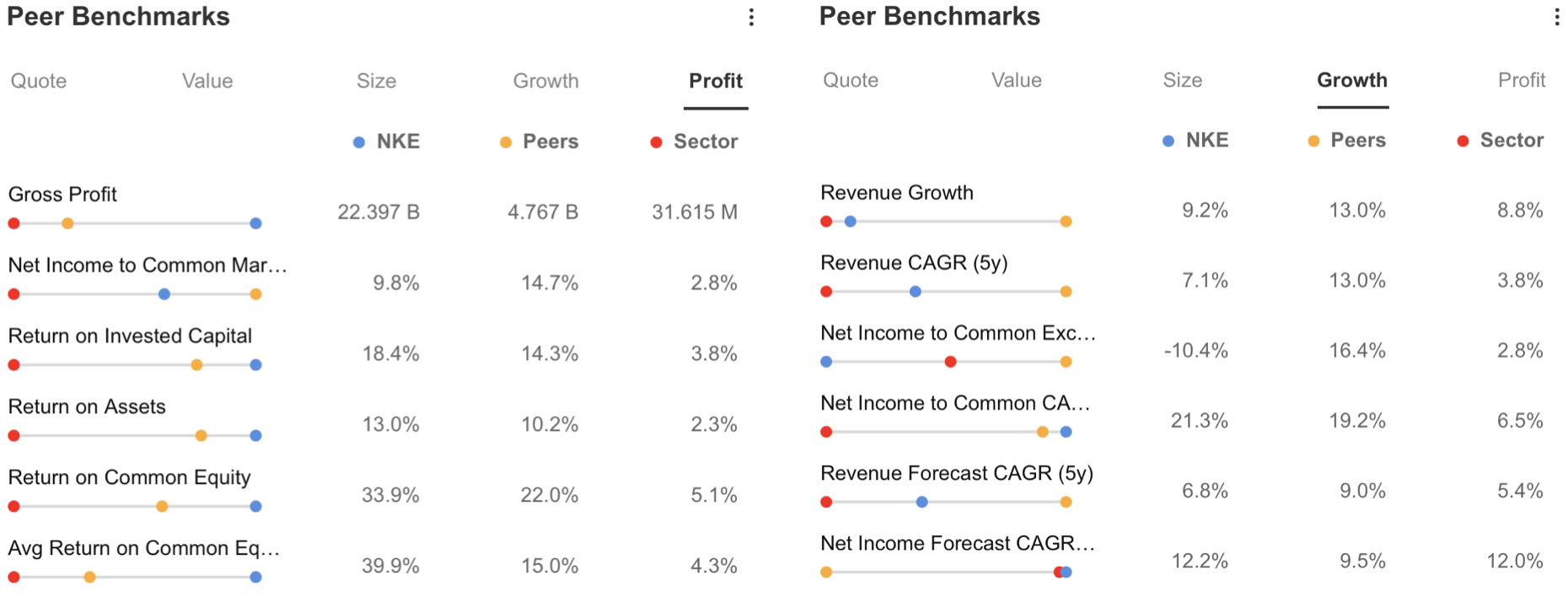
Source: InvestingPro
Considering the size of the company compared to its peers and the industry average, it is explainable that it remains more sluggish in terms of growth. Among other noteworthy items, the company's regular dividend payments, unlike its peers, can be seen as a prominent factor. However, shareholder return averages 5% per annum, which is quite good compared to the 0.7% average of peers.
On the other hand, NKE's 5-year beta of 1.12 is below the peer average of 1.2. This may allow the stock to move more in line with market conditions and be included in the portfolio as a defensive investor tool. 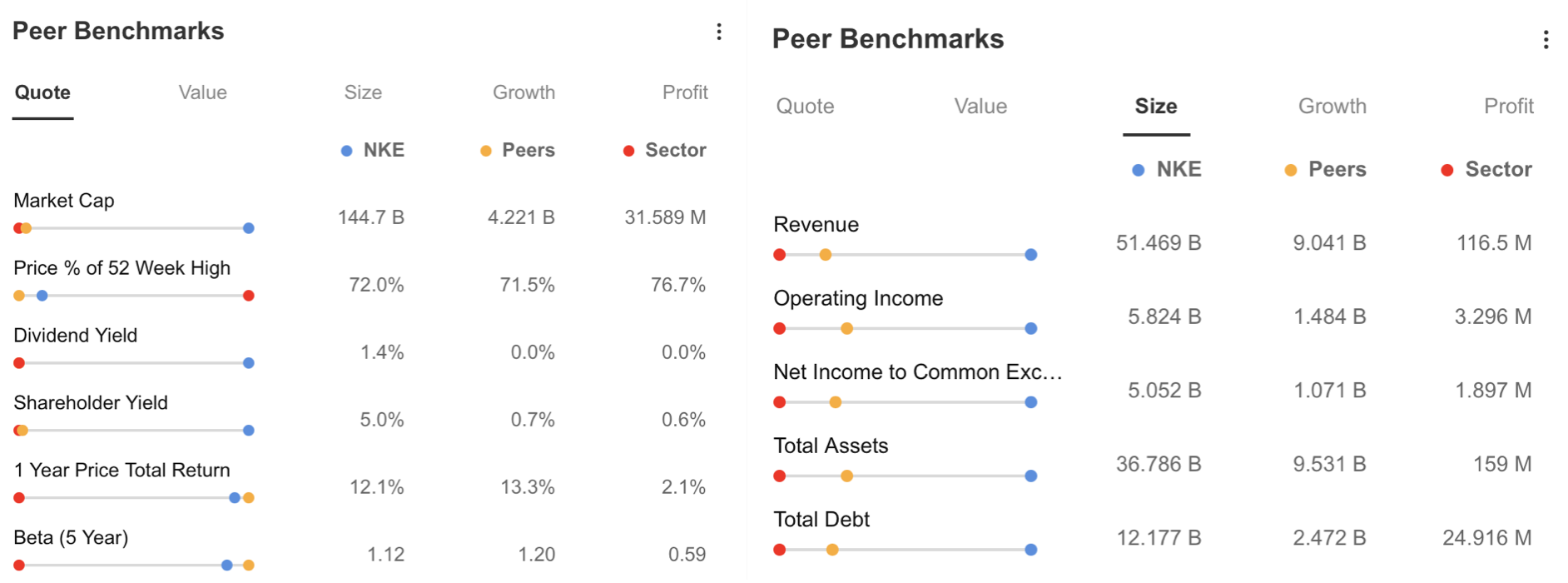
Source: InvestingPro
Valuation
When we summarize the company valuation via InvestingPro, we can see that the positive features of the sportswear giant continue to outweigh. Accordingly;
- Offering a high return on investment
- Raising the dividend for 21 consecutive years
- Continuation of the stock with low volatility
- Having a significant market share in its sector
- Cash flow is at a level to cover interest expense
Conversely, the declining trend in EPS, analysts' downward revisions of earnings expectations for the upcoming period, and the elevated EBITDA valuation ratio are viewed as potential drawbacks for the company.
Nike is scheduled to release its next earnings report on December 21. A total of 15 analysts have adjusted their earnings expectations downward, projecting an EPS of $0.84 for the upcoming period, reflecting an anticipated 5% decline. Furthermore, the revenue forecast currently sits at $13.41 billion, showing a marginal 0.12% decrease.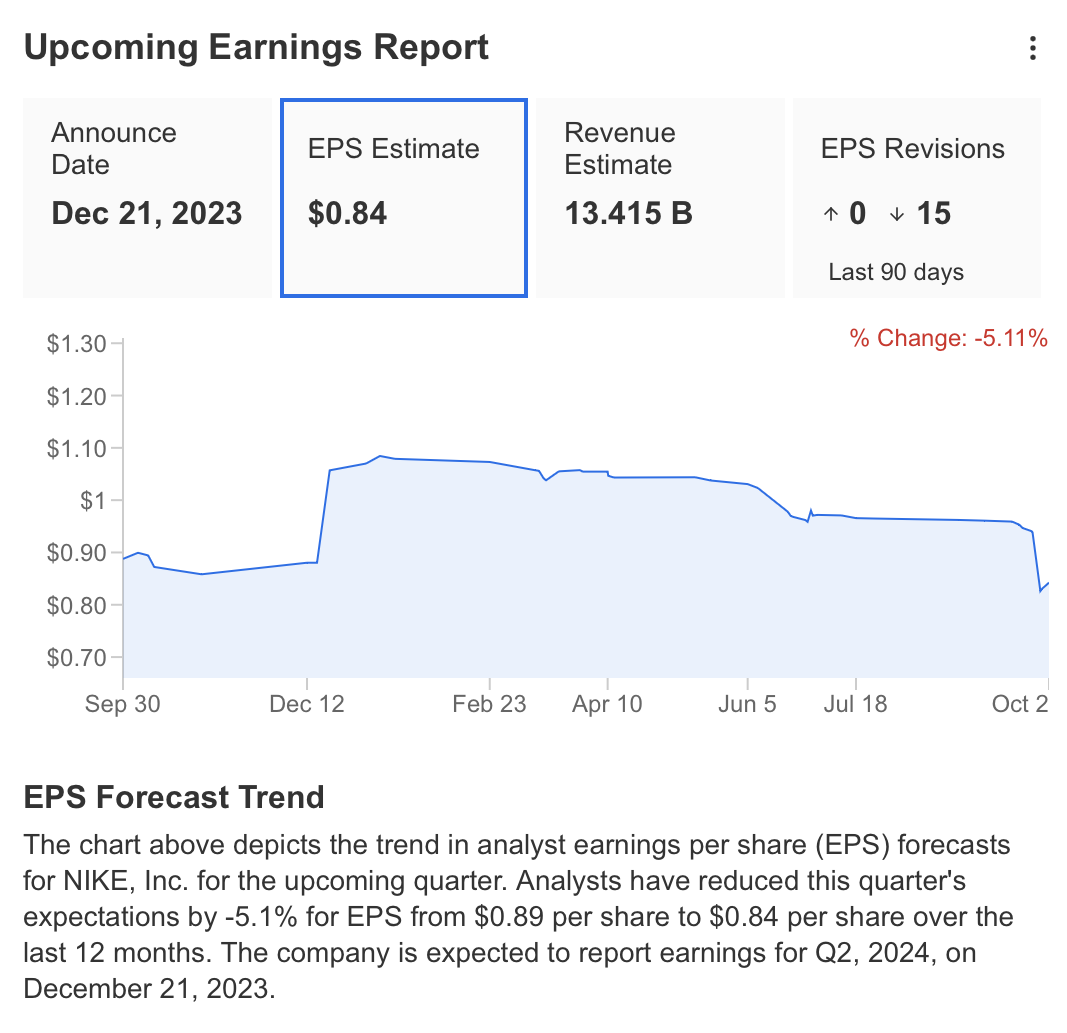
Source: InvestingPro
Despite bearish forecasts for the last quarter of the year, longer-term forecasts remain positive for EPS and earnings. 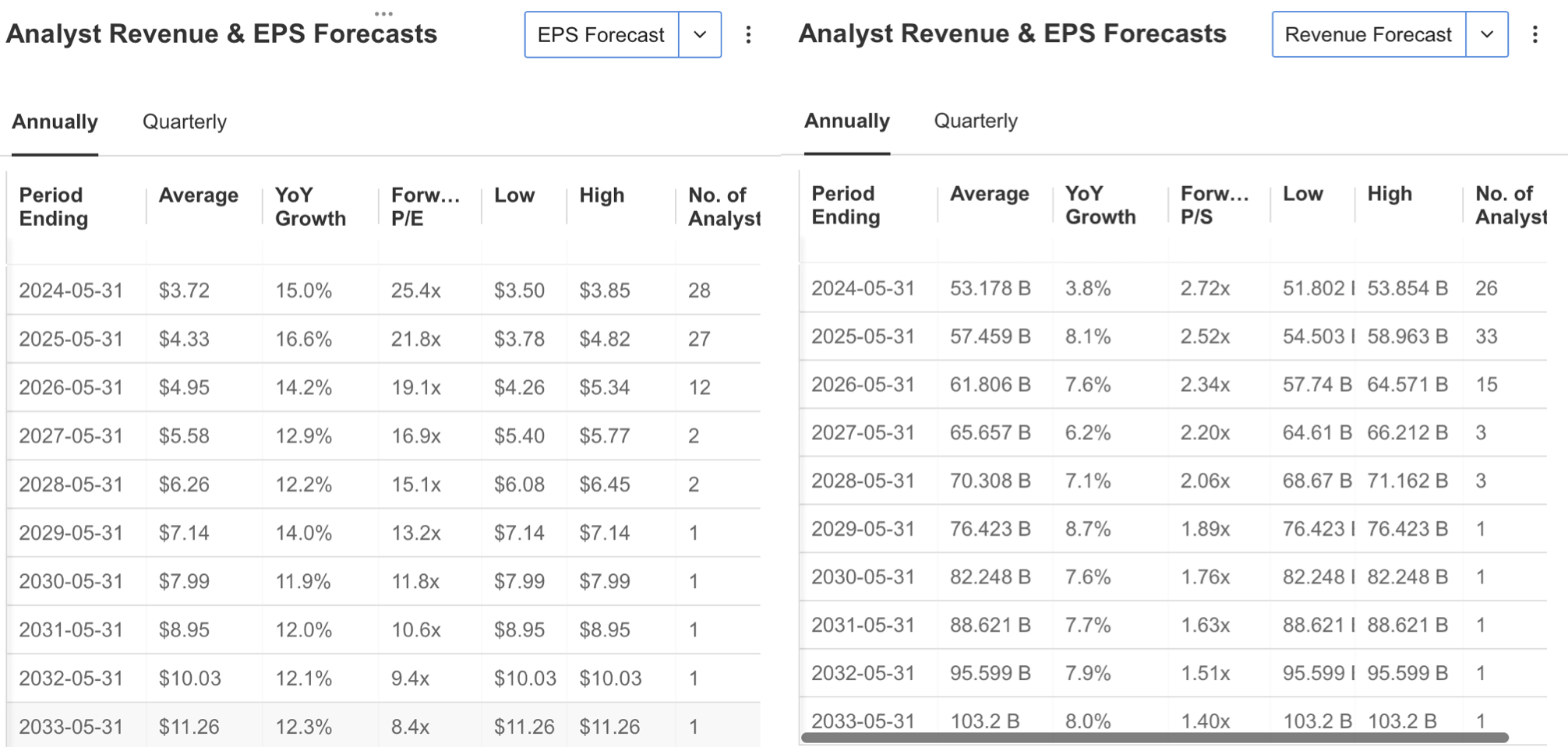
Source: InvestingPro
Price Target
The fair value assessment of NKE stock suggests a potential increase to $104, reflecting a 10% growth projection within the coming year. Moreover, considering data from 15 financial models, the annual target from 32 analyses yields a higher average valuation of $123. These forecasts collectively indicate that NKE is currently trading at a discount compared to its present price of $94.5.
On the technical chart, NKE concluded its recovery phase at $128 in the final quarter of the previous year. Throughout the first half of 2023, it maintained a relatively stable range, fluctuating between $118 and $127 until May.
Subsequently, a downward trend emerged, leading the stock to drop to $88, resulting in an annual loss of 28%. Following the correction that followed the prior year's recovery, buyers successfully upheld this support level, largely influenced by the latest earnings report.
To continue its recovery in the upcoming period, the stock needs to establish itself above the $100 threshold. Beyond that, there exists a resistance zone spanning from $105 to $111. Nevertheless, as long as the $92 support zone holds, NKE is poised for potential upward moves, with further gains possibly reaching up to the $120 range.
Positive signals for a technical ascent can be gleaned from the Stochastic RSI, which has reversed upwards on the weekly chart, along with the notable response of the stock price at the Fib 0.786 support level.
However, if weekly closures dip below $92, it could trigger a new bottom forming below last year's low of $82.
***
InvestingPro has all the tools to help you profit from your investments, including stock market data, fair value, health status and professional charts. Click here to join now!
Disclaimer: The author does not own any shares mentioned in this report. This content is purely for educational purposes and cannot be considered as investment advice.

